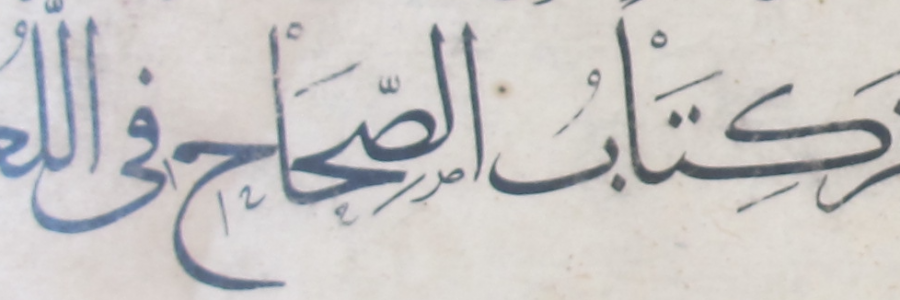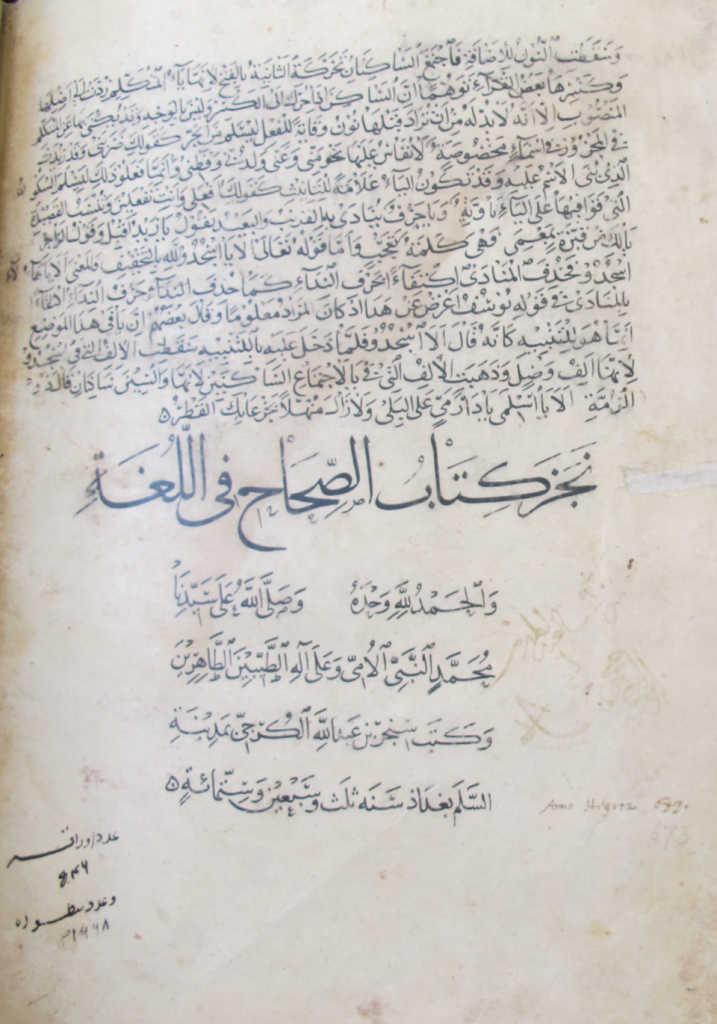
Erpenius’s Royal Manuscript of a Persian Ruler at Cambridge University Library
It is not an exaggeration to say that the oriental manuscripts collected by Thomas Erpenius and kept at Cambridge University Library (henceforth: CUL) since 1632 are among the most important oriental collections in the world. Following several other scholars like Edward G. Browne and Ph S. van Ronkel,[1] I have demonstrated the significance of his library through a series of blogposts. The more time one spends reviewing his manuscripts, the more they reveal their significance. While examining his Arabic materials, I came across the manuscript Dd.2.38 (measuring: 32.1cm x 24.8cm), a thick volume with a magnificent Dutch stamped parchment binding (Fig. 1). The cover alone suggests that this manuscript had a particular importance for Erpenius and other early readers. Erpenius added a note about its acquisition dated 1619.
The value of MS Dd.2.38 becomes more obvious once we open it, witnessing the neat and clear handwriting throughout the volume’s 552 folios. My interest was drawn to one section (ff. 342v-362r) where the quality of the paper and pen are different from the rest of the book.[2]
These folios contain an Arabic work on lexicography entitled al-Sihah fi l-Lugha (Correcting and Healing the Arabic Language) by Abu Nasr Ismail b. Hammad al-Jawhari Farabi (d. c. 1008 CE), widely reproduced throughout the Muslim world. The colophon suggests that it was written by Sinjar b. ‘Abd Allah al-Kurjiy (Gorji) in Baghdad in 673AH/1274 CE. There is a calligraphic seal with golden ink next to the colophon, which becomes more legible when viewed under UV light. Using UV, it was possible for me to identify the first known owner of the manuscript. It was part of the royal library of a Persian ruler from Southern Iran. He was Shaykh Abu Ishaq bin Mahmud Shah (1321-1357), one of the main rulers of the Inju dynasty (r.1325-1356), who had control over Isfahan and Shiraz, and operated between the central regions of Persia in the mid-14th century CE (Fig. 2). He was the “last surviving son of Mahmud Shah Inju.”[3]
Members of this family [viz., Inju] vied for power in southern Persia, and intermittently controlled Fārs, Isfahan, Kermān, and Lorestān. For about twenty years the Injus waged complex and bloody power struggles with each other, the Il-Khans, the Chupanids […], the Jalayerids of Baghdad, and the Mozaffarids of Yazd.[4]
The first folio also includes his name and signature, confirming that Abu Ishaq received it in Isfahan in 750AH/1350CE. Some catalogues inform us that a few Islamic manuscripts were dedicated to him as the ruler of Shiraz,[5] nonetheless, whether he had a royal library or what sorts of materials were among his interests remains obscure. My current conjecture is that Dd.2.38 was stolen or sent to him in Isfahan from Baghdad.
The front cover also contains Erpenius’s index of terms and some notes and annotations which shows the journey of the manuscript over the centuries:
- Nasr b. Yahya (who received it from his Sultan)
- Ismail b. al-Muin (undated)
- Abu al-Hassan Abd al-Malik b. Shaykh dated 757AH/1356CE
- Abd al-Qadir b. Isa al-Hafiz al-Maraghi dated 810/1408CE
- Also kept in Herat, Afghanistan in 840AH/c.1437 CE
MS Dd.2.38 sheds lights on the history of 14th-century Persia and the Middle East, and has the potential to prompt scholars to examine the literary interests of Persian rulers.
[1] Edward G. Browne, A Hand-List of the Muhammadan Manuscripts, including All those Written in the Arabic Character, preserved in the Library of the University of Cambridge (Cambridge: at the University Press, 1900); Ph S. van Ronkel, “Account of six Malay manuscripts of the Cambridge University Library,” Bijdragen tot de Taal-, Land-en Volkenkunde van Nederlandsch-Indië 1ste Afl (1896): 1-53.
[2] The last folio shows a marginal hand writing the folio number as 546 (with an Indian (?) digit of “5”).
[3] John Limbert “Inju Dynasty”, Encyclopaeda Iranica (2004): https://iranicaonline.org/articles/inju-dynasty
[4] Ibid.
[5] See Maḥmūd Ṯayār Marāghī (Ed.) Fihrist-i nuskhahā-yi khaṭṭi-yi madrasa-yi Imām Ṣādiq-I Chālus (Tehran: Miras Maktoob, 2019).


